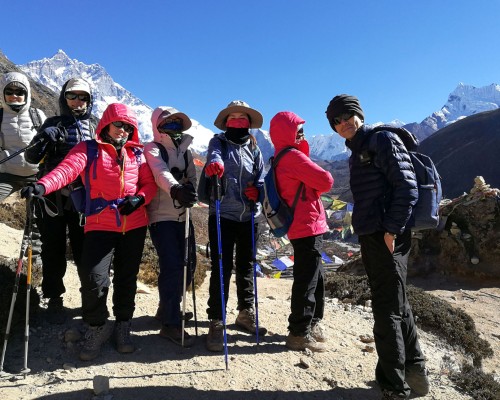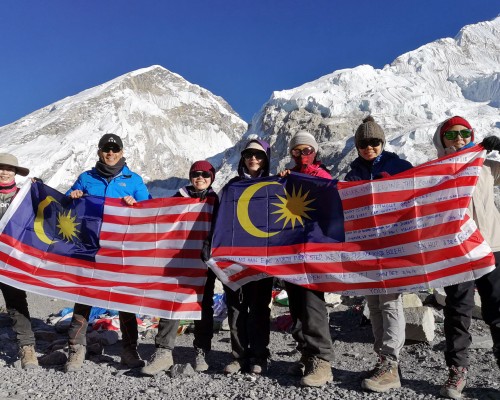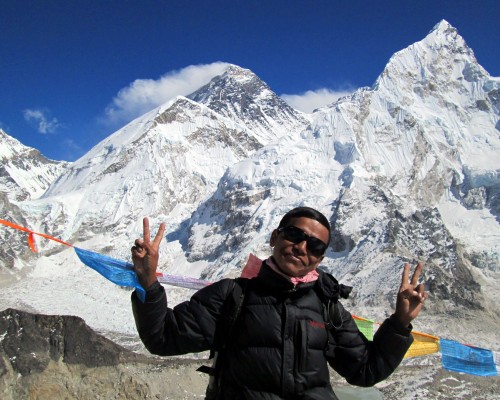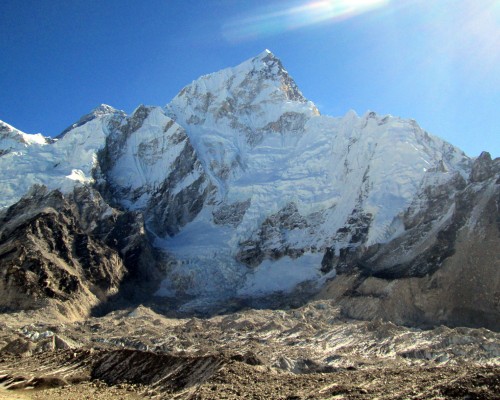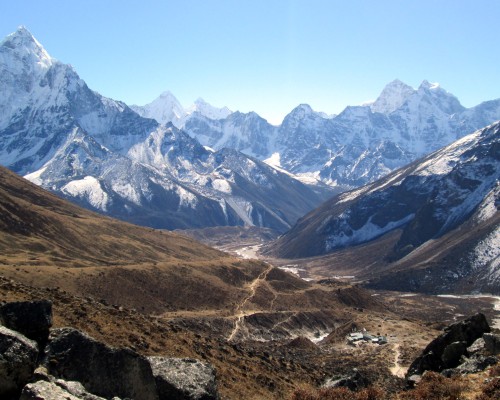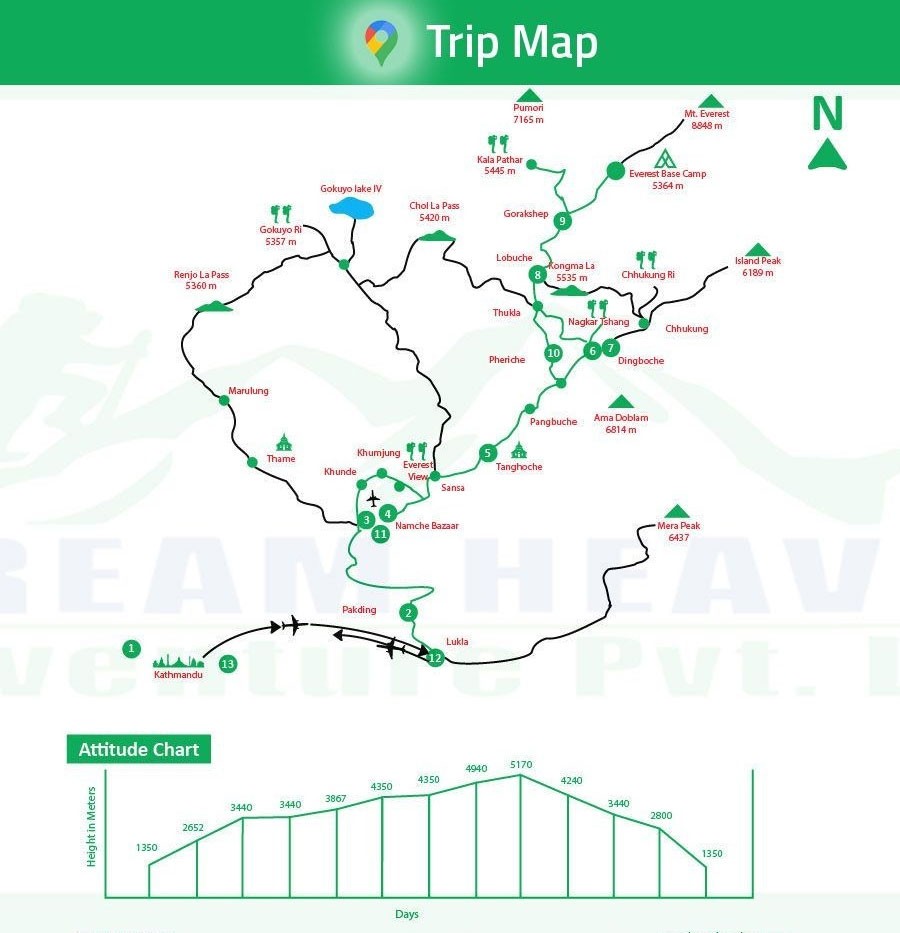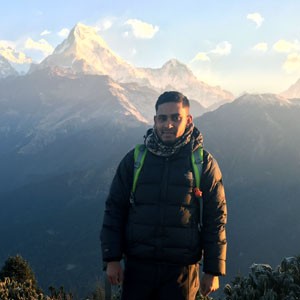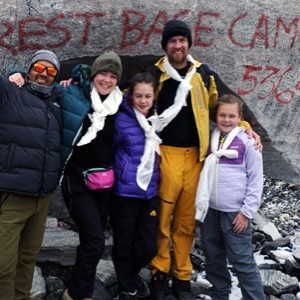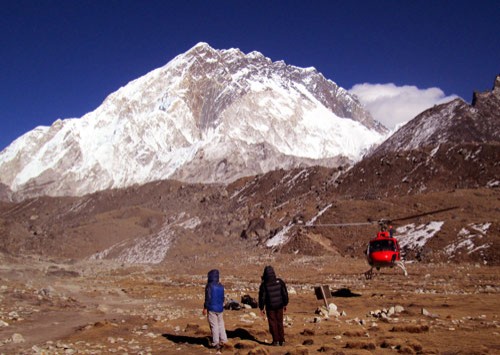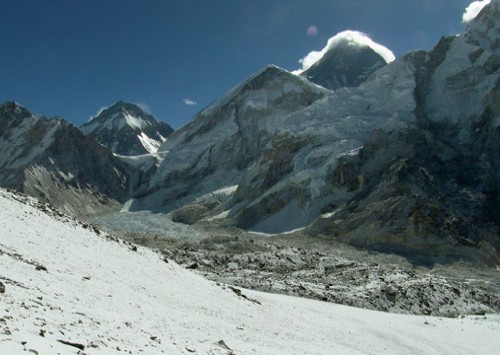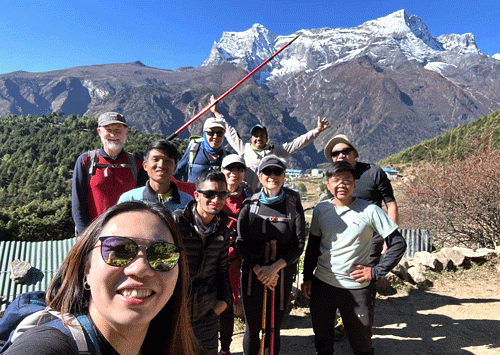Introduction to EBC Trek
Everest Base Camp is the lap of the highest mountain in the world, Mount Everest. Trekking to this place offers a lifetime adventure amidst beautiful Sherpa villages and some of the tallest mountains in the world. Everest Base Camp trek is the world-famous lodge trek- a great trekking destination that offers you the journey of your dreams in the Himalayas.
On this trek, you will hike, following well-established trails within the Sagarmatha National Park. The trek will let you feel the sense of legacy created by some of the greatest mountaineers our world has ever seen. The trail follows the standard EBC course that starts from Lukla and passes by villages like Phakding, Namche Bazaar, Tengboche, Dingboche, and Lobuche.
This is our 14 days Everest Base Camp trek program, which offers jaw-dropping mountain panoramas and leads trekkers to the heart of the Himalayas. Whether you are an experienced trekker or not, you can do the Everest Base Camp trek in Nepal. Apart from this package, we have many Everest Base Camp trek packages that you can check here.
What do you expect during the Everest Base Camp Trek 2025-26?
The Everest Base Camp trek 2025-26 ascends to 5,545 meters from sea level. You will walk via diverse climatic zones and terrain to reach this height. Trekking through lush rhododendron forests, the trail gradually goes above the treeline and passes by glacier moraine. You will follow the Dudh Koshi river and cross numerous suspension bridges on the way.
Walking up to the Everest Base Camp is tough but manageable if you maintain your pace. You will face varying terrain and elevation during the trek. Daily 5 to 6 hours of trekking makes the EBC trek difficult, otherwise, the trail is dotted with comfortable lodges and decent services for trekkers' convenience.
How can you prepare to be ready physically and mentally for a 14 days EBC trek?
We welcome all ages of trekkers for the Everest Base Camp trek in Nepal. It is a moderately difficult trek, so decent fitness is needed even if you don't have previous trekking experience. You can do the Everest Base Camp trekking as your first trek in the Himalayas if you are well-prepared.
Before starting the trek, you have to get involved in physical activities that will improve your stamina, endurance, strength, and walking duration. At least 1 to 3 months of training is recommended. Active/experienced individuals can join the trek without training.
During this 14 days trek, you will trek from one village to another village with a guide and porter. All the logistics and heavy luggage will be handled by them. You only have to carry your daypack. You can also customize the Everest Base Camp trek itinerary as per your requirements.
Why do Everest Base Camp trek with us?
We, Dream Heaven Adventure, have designed our Everest Base Camp trek 2025-26 itinerary very mindfully. We want you to experience the best of the Himalayas on this trek without rushing. Therefore, our itinerary has two acclimatization days, which significantly lowers the risk of altitude sickness. Likewise, you will not ascend more than 500 meters a day.
With our mindfully designed itinerary, best cost, and high standard of service, you will enjoy every aspect of the journey. Our team will take care of all your requirements and make sure the journey is safe. You do not have to worry about hidden costs with us. You can travel freely as we will take care of all the logistics and permits.
The Everest Base Camp trek is truly a life-changing trekking adventure in Nepal that will be in your heart and memory forever!
If you want to trek to Everest base camp in just 7 days, check out Everest Base Camp Short Trek
EBC Trek 2025-26 Highlights
- Trek to the base of the tallest mountain in the world, Everest Base Camp
- Enjoy mesmerizing aerial panoramas of the Himalayas during the Lukla flight
- Explore the wilderness of the Sagarmatha National Park
- Spend nights in beautiful Sherpa villages
- Cross numerous suspension bridges throughout the trail
- Get to see the lifestyle and culture of the Sherpa community closely
- Go on two acclimatization hikes to the Hotel Everest View and Nagarjuna Traverse diverse terrain and climate zones, enjoying a wide range of landscapes
- Visit ancient monasteries on the way, like Tengboche and Pangboche
- Hike to Kala Patthar to witness a breathtaking sunrise and a wonderful mountain view
- Witness several tallest mountains in the world, along with the Khumbu Icefall

